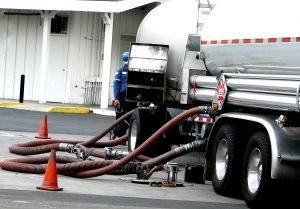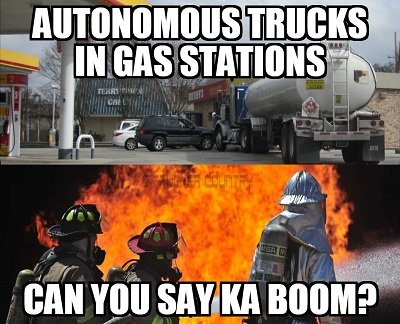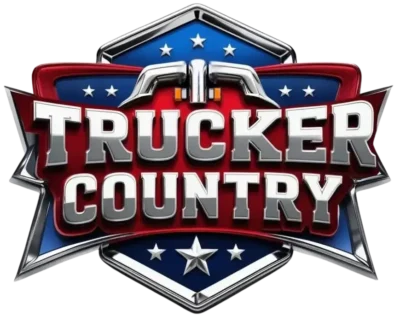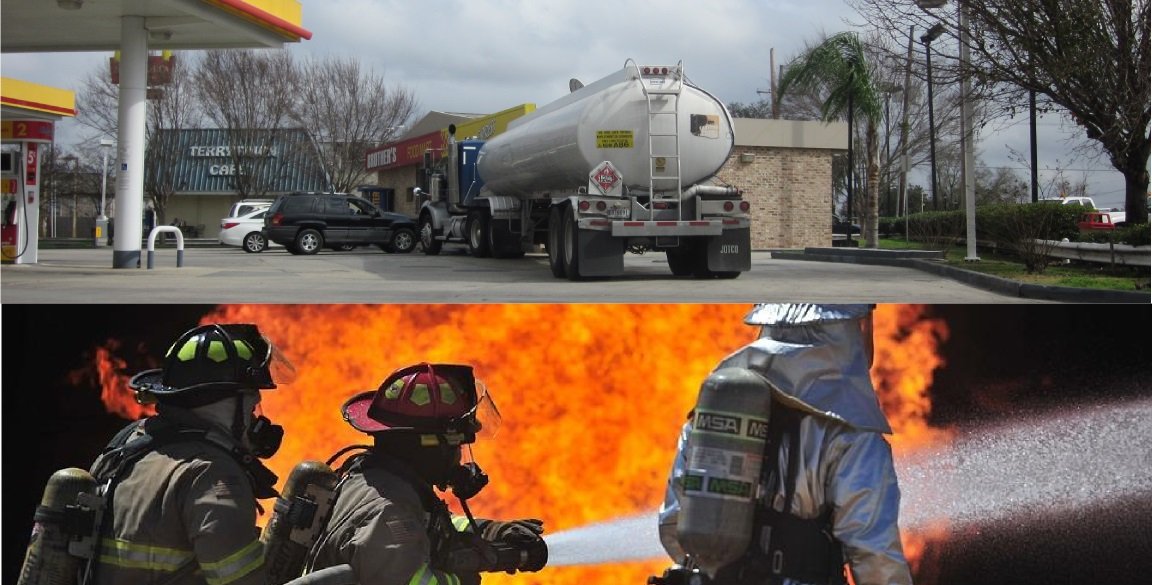As you may have read in our last post, many of you have seen some of the recent headlines talking about the future of trucking and how autonomous trucks will eventually put truckers out of a job. Things will run smoother, the roads will be safer, and there will be a tremendous increase in efficiency and overall cost savings. Articles like the following are being written about how better off everybody will be without truck drivers…
A driverless truck could operate 24 hours, stopping only for fuel when needed. This could potentially dramatically cut the cost of consumer goods transported by truck. However, the flipside is potentially millions of lost jobs, as heavy truck drivers are ultimately phased out in favor of autonomous, drone-like trucks. In many states in the U.S., truck driving is one of the top professions by category. Read more at trucktrend.com

Today we’re focusing on Tanker Drivers, and how important they are to the safety and happiness of hundreds of thousands of people every day.
Drivers that haul fuel to gas stations have a lengthy job description that includes a long list of responsibilities:
- Gas stations have cars buzzing around.
- These cars are typically driven by people, who can be unpredictable (to say the least).
- Fill holes have to be located (if not a regular stop). They’re typically in a different location for each stop, depending on the layout of the station and gas pumps.
- They need to be approached with care, and the truck needs to be angled just right, so all the hoses can reach the tanks. Getting this done often means having to wait until they’re clear of vehicles and pedestrians.
- Drivers must “stick” underground tanks and the truck’s own tank (whether in a semi or straight truck) to determine the fuel levels.
- Hoses need to be hooked up.
- Pumps have to be started, watched, and stopped at the right time.
- The flow of fuel has to be controlled and monitored at each and every part of the process.
- Drivers have to be able to recognize and respond to any spills or any other emergencies.
- And last, but not least, the driving of a tanker. This requires care, skill, and judgement ability you won’t just be able to program into a computer. Plus, fuel is a hazardous material, the handling of which is supervised by the TSA (this will be covered more in a future post).
I could go on, but this isn’t a tanker driver course. (But if you want, you can take some free tanker and hazmat endorsement tests!)
There are many types of tanker drivers. Non-hazardous products hauled include water, waste products, milk, molasses, you name it – and every one of them makes our lives a little easier by doing the hard work autonomous trucks are incapable of doing.

Tankers are, of course, a specialized type of trucking, and talking about how they’re unlikely to be replaced by driverless trucks may seem like an obvious point, but we feel it is one that needs to be made. Tanker Yankers are key contributors to our daily lives, and they won’t be easily replaced by new technology.
Stay with us in the coming days as we continue to highlight different types of trucking and how essential TRUCKERS are to each of them!

